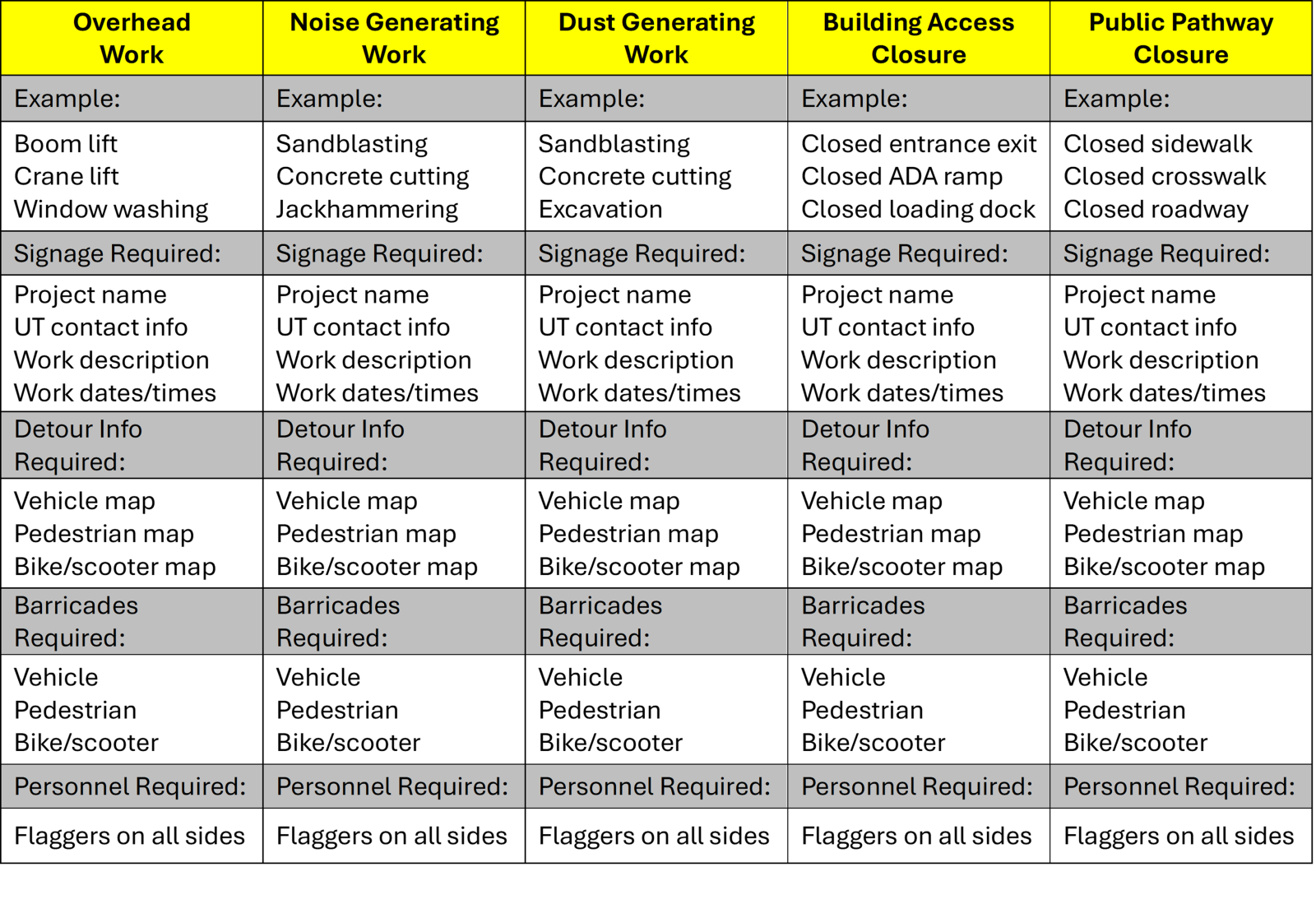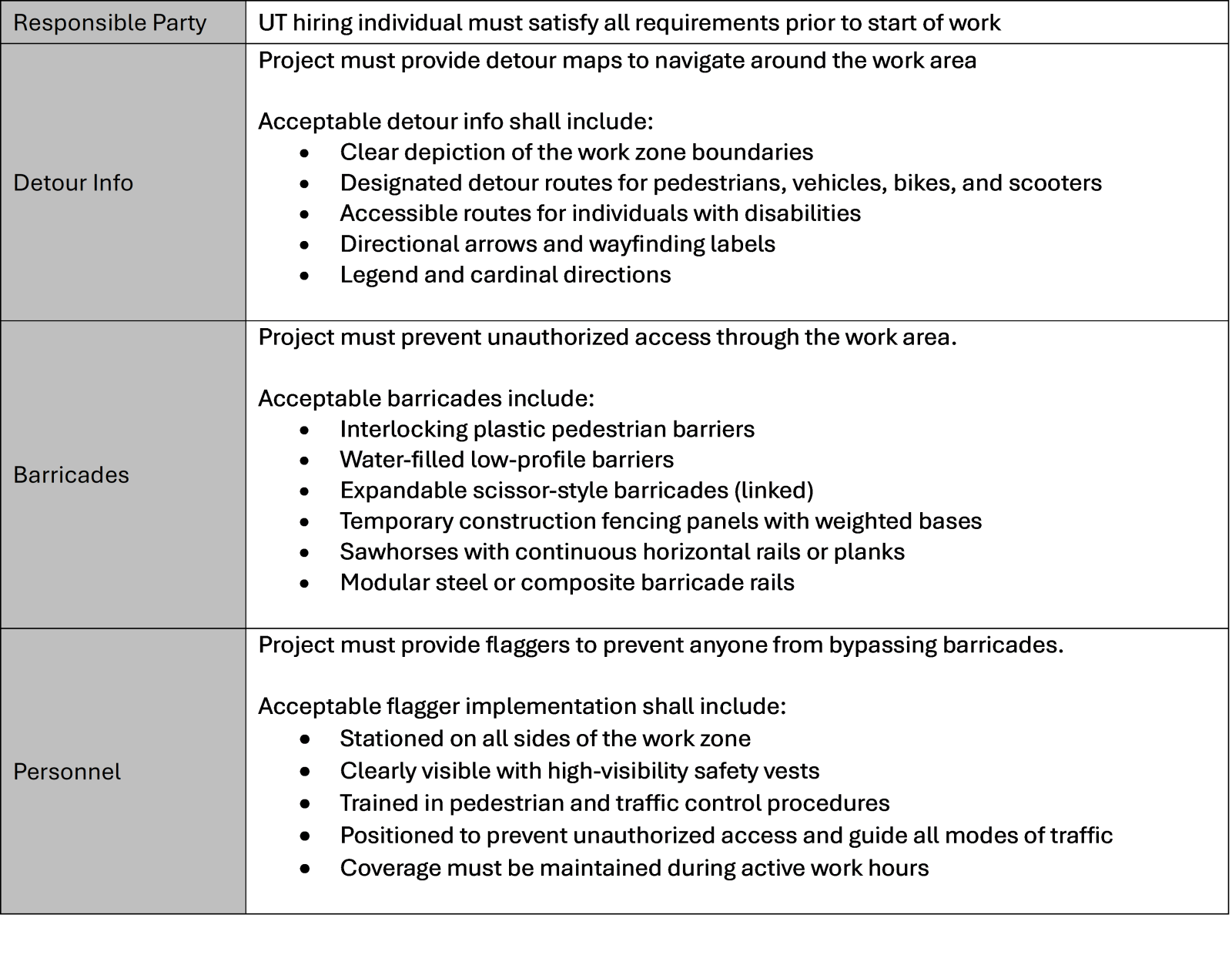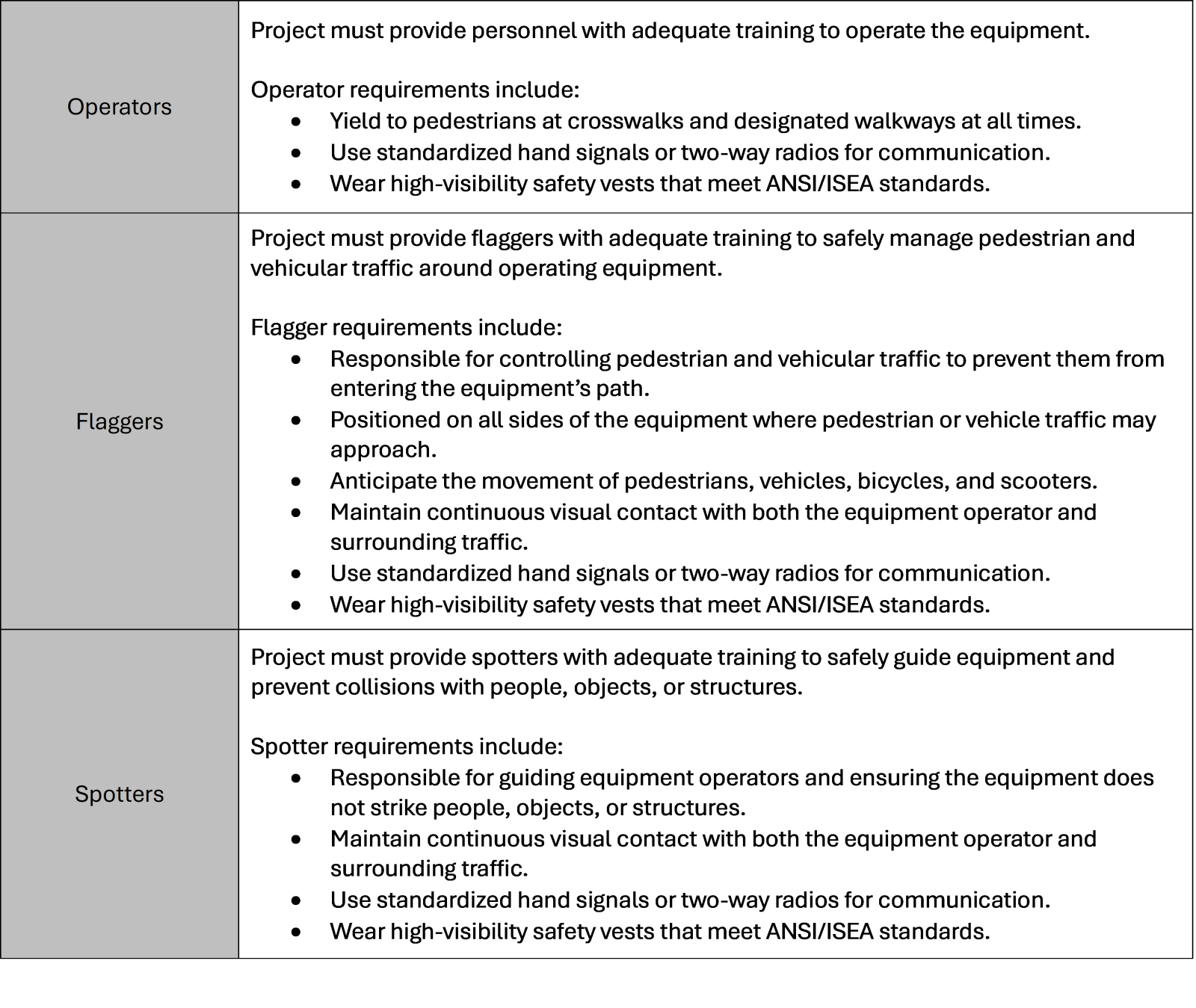A wide range of construction and maintenance activities occur across the University of Texas at Austin campus. These activities frequently extend beyond traditional construction fencing and occupy shared spaces used by pedestrians, vehicles, UT carts, bicycles, and scooters.
Pedestrian Protection Requirements
The following table outlines the minimum pedestrian protection requirements for any work that impacts public access to ensure the safety and mobility of students, faculty, staff, and visitors.

Additional Pedestrian Protection Details

Required Safety Measures for PITs and MEWPs
Additional safety measures are required to prevent collisions and ensure visibility when operating Powered Industrial Trucks (PITs) or Mobile Elevating Work Platforms (MEWPs) in areas accessible to pedestrians, bicycles, vehicles, and scooters. As outlined below, flaggers and spotters are required when operating PITs or MEWPs outside the boundaries of a secure construction site.

